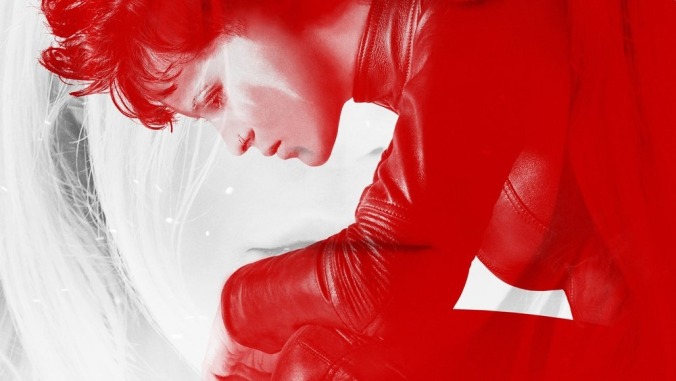The Girl In The Spider’s Web pits Lisbeth Salander against multiple foes—and the franchise machine
Film Reviews Movie Review
For a few minutes early on, The Girl In The Spider’s Web seems to promise a kind of feminist Batman movie—specifically, Christopher Nolan’s modern breed of Batman movie, with all the edgy nihilism and slick, rain-soaked cinematography that comes with it. That’s thanks to a scene that was heavily excerpted in the official trailer for the film, where hacker-turned-avenger Lisbeth Salander (Claire Foy) prepares to serve up some brutal vigilante justice to an abusive CEO in his swank Stockholm apartment. And The Girl In The Spider’s Web is, in some ways, a superhero movie, complete with an origin story and an archnemesis for Lisbeth, “the girl who hurts men who hurt women.”
It’s also, for most of its running time, a spy thriller, one that, despite its solid execution and delightfully unexpected casting choices, really has nothing to do with that initial scene—and has little of its radical edge, besides. It’s enough to make you wonder why the filmmakers opted to include it. Perhaps it’s to remind the audience of what brought us here in the first place. After all, and as its subtitle suggests, this film is several generations removed from Swedish author Stieg Larsson’s original novel. Not only is this the third cinematic manifestation of Larsson’s bestselling Millennium series (and the second to come from Hollywood), but also it’s based on a book published 11 years after Larsson’s death and written by his successor, David Lagercrantz.
Through all these different adaptations and reboots, the appeal of the series has remained constant: It’s Lisbeth, whose dragon tattoo gets its ample, obligatory screen time in this installment as well. Writer-director Fede Alvarez (Don’t Breathe) and co-screenwriters Steven Knight (Eastern Promises) and Jay Basu (the, uh, Monsters sequel) are very aware of this dynamic, adapting the novel to make Salander, not journalist Mikael Blomkvist (Sverrir Gudnason), our primary in to the story. (Blomkvist recruits Salander to assist in his investigation in the book. Here, it’s the other way around.) But while it’s refreshing to see the male lead hang around waiting to be rescued by a more competent and clever woman, Blomkvist’s essential uselessness is just one of the loose ends and missed opportunities left in the wake of the film’s hellbent mission to reshape the franchise into airport-paperback mass marketability.
A brief opening sequence sets up the core conflict between Lisbeth and her sister, Camilla (Sylvia Hoeks), who acquiesced to their father’s sexual abuse in order to follow in his footsteps as a crime boss, while Lisbeth rejected her family and their underworld business. After this prologue, it doesn’t take long for Salander to take on her mission. She’s hired by former NSA employee Frans Balder (Stephen Merchant) to steal back the software he feels tortured about helping develop, a program that can access all of the world’s nuclear launch codes. That part’s no problem for Salander. But things get complicated from there, as the Swedish Secret Service, NSA agent Edwin Needham (Lakeith Stanfield), and a Russian gang identified by their matching spiderweb tattoos all join in the chase.
Doing some impressive accent work, as always, Foy splits the difference between Rooney Mara’s mannered interpretation of the character and Noomi Rapace’s more vulnerable work in the role of Lisbeth Salander. Her performance is limited, however, by the character’s one-note action-hero arc and emotional unavailability, which gives her scant opportunities to show much range. Still, hers is the most interesting performance in the film, followed by Stanfield’s as Needham, the only other person on screen given more than one character beat. (He gets two.) Everyone else is flattened into a cartoonish hero or villain, and a plot point about Balder’s autistic son is so underplayed that the boy’s neurodivergence is only evident thanks to a throwaway line about “how he thinks.”
In a clever nod to David Fincher’s The Girl With The Dragon Tattoo, Alvarez opens The Girl In The Spider’s Web with chilly, precise framing and a color palette that ranges from snow-white to burnished steel. As the film goes on, however, this desaturated homage gradually bleeds into Alvarez’s own signature style, which here means hand-held close-ups, bruise-like greens and rusty oranges, and a knack for inventive weaponry. (Who else but a horror director would think to use latex fetish gear as a torture device?) But while Alvarez acquits himself with thrilling action sequences and breakneck pacing, the overall impression left by this “New Dragon Tattoo Story” is one of a razor-sharp blade dulled by the demands of franchise filmmaking.